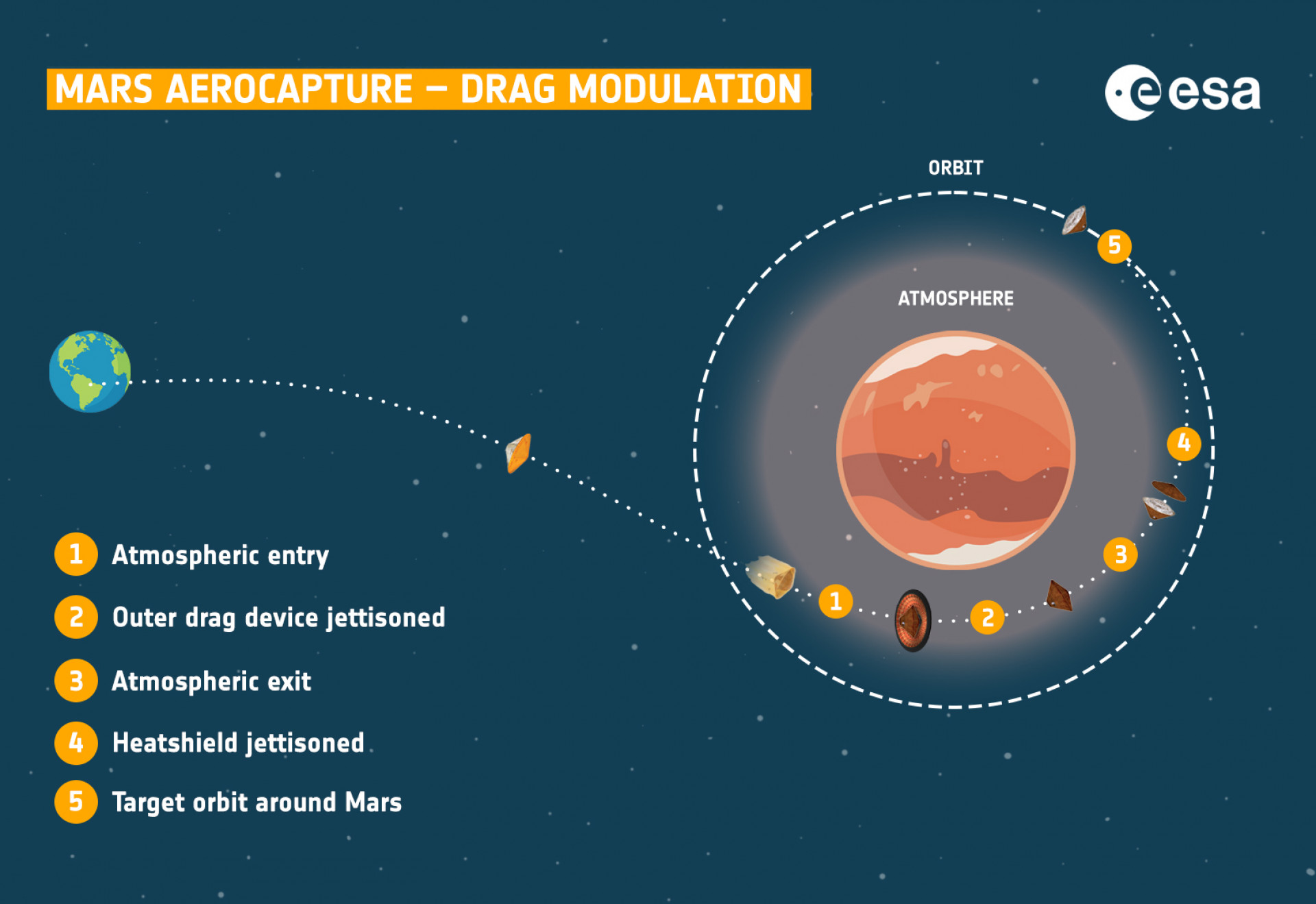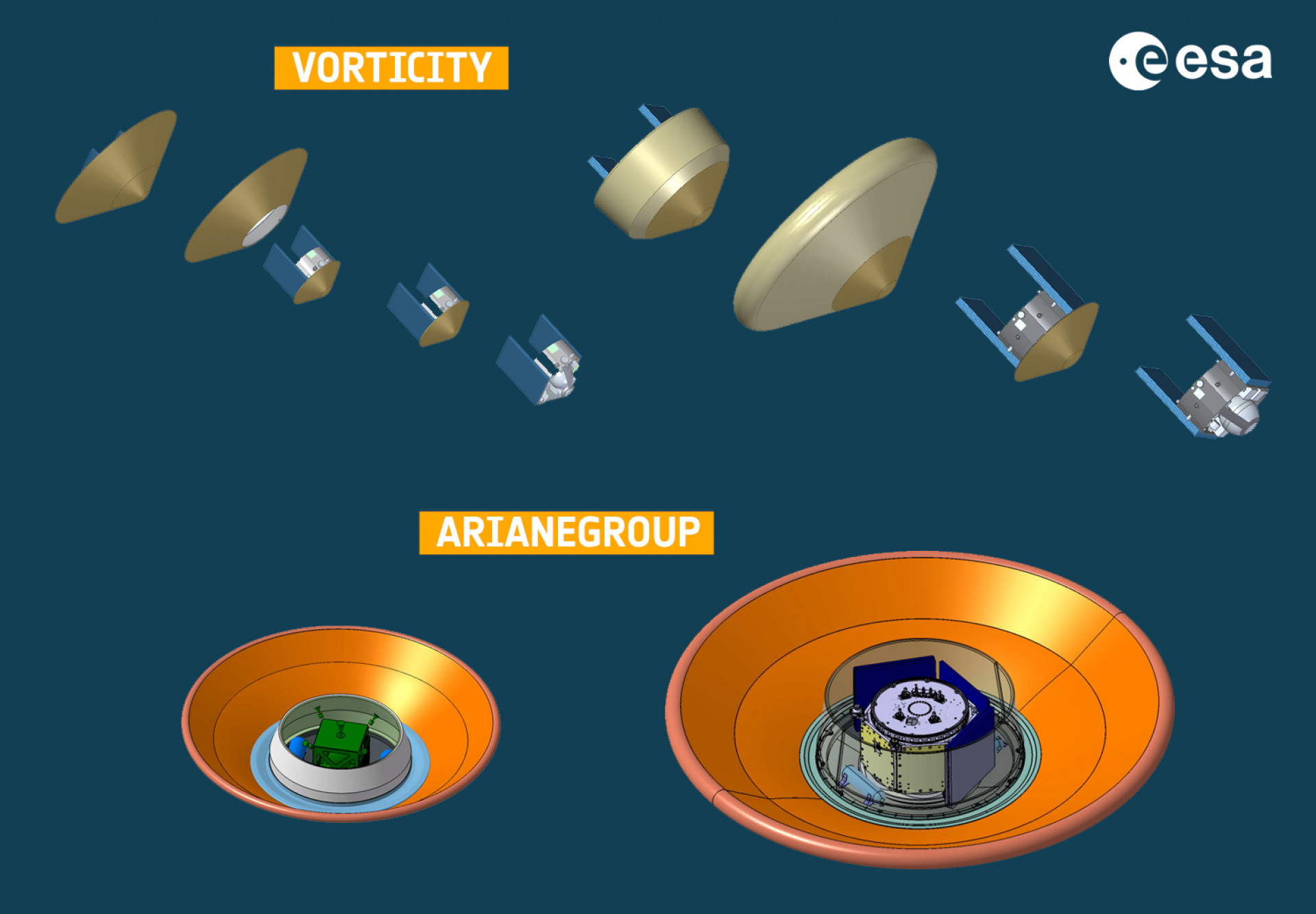您现在的位置是:ESA explores Aerocapture: a decades >>正文
ESA explores Aerocapture: a decades
上海品茶网 - 夜上海最新论坛社区 - 上海千花论坛8579人已围观
简介By subscribing, you agree to our Terms of Use and Policies You may unsubscribe at any time.The Europ...
By subscribing, you agree to our Terms of Use and Policies You may unsubscribe at any time.
The European Space Agency (ESA) is embarking on a challenging mission to revolutionize how we reach Mars. The conventional method of orbiting the Red Planet is to use a rocket engine to slow down the spacecraft as it approaches Mars at high speed.
This technique has worked well for 16 missions since 1971, including ESA's Trace Gas Orbiter in 2016. But it has some drawbacks. It requires a lot of fuel, which adds to the mass and cost of the mission. It limits the speed at which the spacecraft can arrive at Mars, which prolongs the journey and limits the types and capabilities of missions we can undertake.
See Also Related- NASA trials next-gen aircraft designs on Earth and Mars, a first
- Quadcopter to support China's sample gathering endeavors on Mars
- NASA detected the disappearance of solar winds on Mars last Christmas
Aerocapture
But what if there was another way? What if the spacecraft could use the atmosphere of Mars itself to slow down instead of relying on fuel? This is the idea behind 'aerocapture,' a concept that has intrigued engineers since the mid-1960s.
Aerocapture flips the script. Instead of brute force, it harnesses the Martian atmosphere's drag to decelerate the spacecraft, much like how air resistance slows down a falling object.
Aerocapture would have two main benefits. Firstly, it would save fuel, which could be used for other purposes or reduce the launch mass. Secondly, it would allow the spacecraft to enter Mars faster, which could shorten the cruise time.
Aerocapture could also enable smaller spacecraft to reach orbit and, in the future, be useful for larger spacecraft carrying humans or cargo. While Mars is an appealing first target for aerocapture, the technique could also be applied to other planets with atmospheres, such as Venus or Saturn.
But aerocapture has never been tested, neither at Mars nor elsewhere. The idea has been considered too risky for a scientific mission and too expensive for a demonstration mission.

ESA
That is why ESA's Basic Activities recently funded two studies to design spacecraft that use a simple and feasible aerocapture system. They've funded two teams – ArianeGroup and Vorticity – to design and refine spacecraft concepts specifically tailored for this fiery ballet. Each team brings a unique approach, exploring inflatable heat shields, rigid decelerators, and ingenious jettisoning mechanisms to shed unnecessary weight during the plunge. The goal was to increase the confidence in aerocapture and make it a viable option for future science or exploration missions.
ESA engineer Andrew Ball supervised the research: "The two studies had slightly different approaches and philosophies, which is great because we can learn from both and combine the best aspects."
Challenges and further studies
The main challenge with aerocapture is control. You have more control over the outcome when using a rocket engine to slow down a spacecraft. But with aerocapture, you must rely on the right amount of atmospheric drag to put the spacecraft into the desired orbit. The drag depends on many factors, such as the size and shape of the spacecraft, its speed, its angle of entry, and the atmosphere's density.
It also depends on the device used to create drag, such as a rigid shield, an inflatable shell, or a trailing decelerator. The two studies used the simplest form of aerocapture control involving a large outer drag device. At a certain point, when the spacecraft has slowed down enough, the outer part of the device is scrapped, leaving the smaller inner part to complete the atmospheric pass.
Once the spacecraft is out the other side of the atmosphere, it throws off the protective aeroshell, leaving the spacecraft alone to orbit Mars. This would mark the first successful aerocapture on the Red Planet and open new possibilities for future missions.

ESA
Each study explored two mission types: one standalone and one 'piggybacking' on another Mars mission. The ArianeGroup team investigated inflatable drag devices with a rigid central shell for both types. The Vorticity team investigated a different inflatable decelerator for the standalone mission. In contrast, for the piggyback mission, they aimed for a concept based as far as possible on existing technologies – using only rigid drag devices.
"These were two of the first-ever system studies to look at this specific aerocapture technique, using many existing technologies, and they went deeper than before," says Andrew. "We will digest the concepts further, discuss with experts on specific topics, and then come up with a more focused mission scenario and set of technology development requirements where needed. We hope that this will lead to a full mission concept study, including a detailed launch and delivery scenario and a plan for the mission of the small orbiter after its aerocapture."
If ESA decides to proceed with such a mission, it could launch in the early 2030s, becoming the first demonstration of Mars aerocapture. It would be ambitious, considering that it is not possible to fully test the technique around Earth due to the different atmospheres and additional challenges of deep space navigation that come with visiting Mars.
"Even if we don't go much further with this specific concept, opportunities to make use of the technologies may arise elsewhere," concludes Andrew. "For example, some of them could be useful for deorbiting objects from Earth orbit, perhaps the return of upper stages. This could eventually even see a business case."
Tags:
转载:欢迎各位朋友分享到网络,但转载请说明文章出处“上海品茶网 - 夜上海最新论坛社区 - 上海千花论坛”。http://www.jz08.com.cn/news/377573.html
相关文章
Bybit to launch USDC spot pair after partnership with Circle
ESA explores Aerocapture: a decadesBybit plans to add USDC spot pairs and other products to its retail and institutional clients.Crypto...
阅读更多
Brazil's regulator approves first Ether ETF
ESA explores Aerocapture: a decadesThe nod for an Ether exchange-traded fund comes just a month after the approval of the first Bitcoin...
阅读更多
ECB is launching a digital euro project
ESA explores Aerocapture: a decadesAfter nine months of experimentation, the ECB is launching a two-year investigation phase to explore...
阅读更多
热门文章
- CoinLinked To Raise $5 Million Via A Regulated STO
- Scientists develop new material that can jump 200 times its thickness
- JBS SA Using Blockchain to Monitor Deforestation in Amazon
- Bitcoin price dips to $31,600
- Crypto Transactions Between Latin America & Asia Are Growing
- A Global Tour of Bakeries With Fascinating Histories
最新文章
SafeMoon set to surge again: where to buy SAFEMOON
Bybit to launch USDC spot pair after partnership with Circle
GLM outperforms the broader market and rallies by 42% on Monday
India could see a trillion
Microsoft aims to boost its search engine with OpenAI's ChatGPT to rival Google
Crypto ATM firm Bitcoin Depot to go public via SPAC